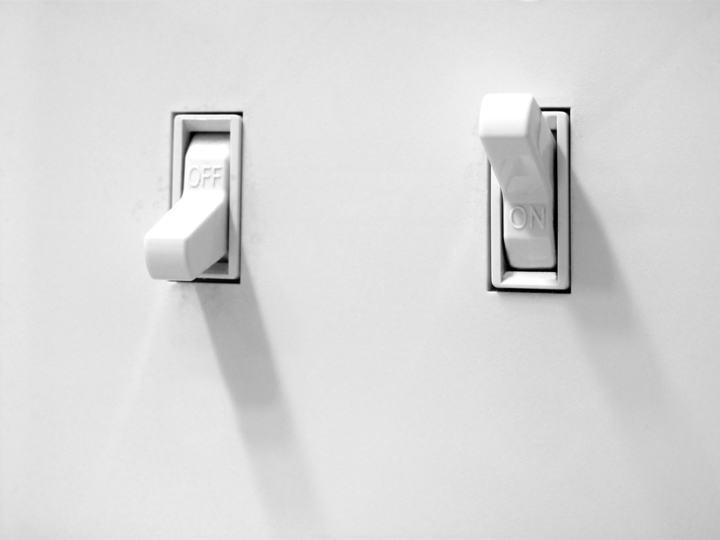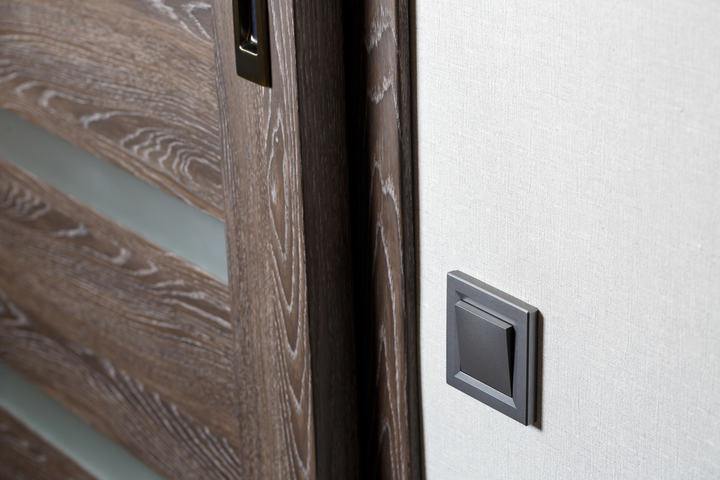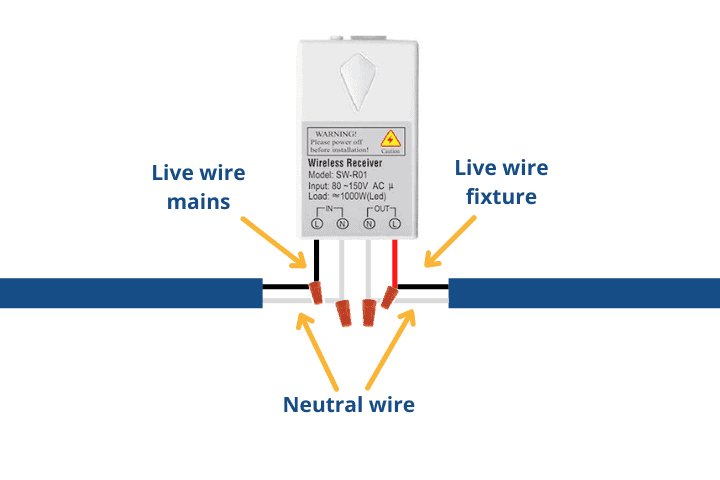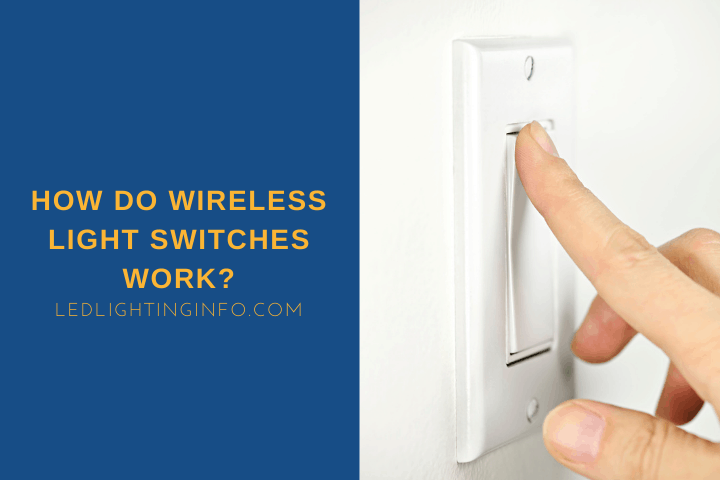The placement of your light switches is pretty essential.
They need to be accessible for everyone in your home, and ideally in a place where you don’t need to walk into a dark space to reach them.
If your light switches aren’t the easiest to get to, there is a modern solution – wireless light switches.
This innovative tech offers a few benefits over a traditional light switch.
A wireless light switch is completely wireless and uses a radio signal to tell your light to turn on or off. Some models are powered by batteries or solar, but most are self-powered, using kinetic energy.
In this article I’m going to explain to you:
- What a self-powered wireless switch is
- How the wireless switch works
- How to install a wireless switch
What Is A Self-Powered Wireless Switch?

Really, the clue is in the name. A self-powered wireless switch is a totally wireless switch and powers itself.
It doesn’t need a physical connection to the circuit that it’s controlling, and it doesn’t need connecting to its own power source.
The cheapest wireless switches are battery-powered. So technically, they aren’t self-powered since they need batteries.
These aren’t ideal because you’ll have to replace the batteries over time, and you can’t monitor the battery level.
One day it’ll just stop working, which can be inconvenient.
Another type is solar-powered. These aren’t too common but provide another way to power the switch without wires, just using ambient light and converting it into power, just like many calculators do.
However, the most common and best type of self-powered wireless switch is a kinetic one.
These use the simple power of kinetic energy so that when you press the switch with your finger, a module collects the kinetic energy of the movement and converts it into electricity to power the transmitter.
The amount of power generated is minimal. Still, enough to make the transmitter work since it’s a simple RF signal. Therefore, a wireless switch will work for as long as the mechanical parts inside can endure – most manufacturers state between 50 and 60 years.
How Does A Wireless Light Switch Work?

So, now we know how they are powered. What do they do with that power to control your lights?
Wireless switches use radio signals. The switch has a transmitter and comes with a receiver.
The receiver is usually installed within a light fitting. Still, you don’t have to – it can be wired anywhere in the circuit between the power source and the positive of the light fitting.
An easy alternative to the light fitting, if you don’t want to mess around with your walls, is to add the receiver to the existing light switch that controls the fixture – just remove the panel and wire it in behind it.
You can also get a receiver that plugs into a power outlet if you’re using a lamp or any other device you instead want to control with a switch.
When you press the switch, it sends an RF signal from the transmitter to the receiver, switching the light on or off as commanded.
That’s because the receiver acts as the switch. When off, it breaks the circuit, so no power reaches the light fitting – it acts as a standard light switch in between.
When you press the switch to turn it on, it reconnects the circuit and sends power to the light fitting.
Essentially, the receiver is just a replacement for a traditional light switch – you’ve just moved the actual ‘switch’ element that you interact with onto another device, which you can place elsewhere in the room.
How To Install A Wireless Light Switch?

There are two steps to installing a wireless light switch – installing the receiver and then installing the switch itself.
Installing The Wireless Receiver
Let’s start with the receiver. The receiver will have three wires and a wireless antenna that might look a little like a wire, so just be careful not to confuse them.
The antenna won’t have exposed wire ends for you to connect into the circuit, so it should be easy to tell them apart.
I’ll explain this for a light fitting first and then clarify the difference for installing it in a switch recess instead afterward.
Firstly, turn off your power – never mess with wires when the power is on!
Then, unscrew the light fitting or the light switch where you’re going to install the receiver.
Connect the black power and the white neutral on the receiver to the existing power and neutral cables previously connected to the fitting or switch.
The red cable on the receiver connects to the black cable on the fitting. Then you’re done with this step – just reinstall the fixture and add a light bulb.

If you’re replacing a wall switch with the receiver, you first need to mark which is the positive wire and which is the negative that the switch is wired to.
The black wire on the receiver needs to connect to the positive and the red to the negative. If you aren’t sure, then don’t guess – get the help of a professional.
One thing to note – if you don’t know how to connect wires easily, the simplest way is with a wire cap (Amazon).
They’re cheap, small, and mean you don’t have to use any solder or electrical tape.
Installing The Wireless Switch
Once the hard work is done and you’ve installed the receiver, it’s time to install the wireless switch.
This is a lot easier since you just need to screw it into the wall – and that’s it.
Find the location that’s most convenient for you, and screw it in – all you’ll need is a powered screwdriver and a spirit level.
The only slight consideration is range – but it should only be a problem if you’re installing the switch in a commercial property, or you live in a mansion.
Most wireless switches (Amazon) have a range of at least 100 feet, often much larger – just check the limit on the one you choose to buy.
Here’s where you need to be wary of buying really cheap equipment from China or other international markets.
The quality of the components is usually nowhere near as good. So you might not get the reliable radio signal range that’s advertised.
Remember that products from China are not regulated in the same way, so they can make claims that aren’t true about the effective range.
Final Words
If you want to change the location of your light switches in your home, getting them completely re-wired can be expensive.
Wireless light switches are a much more cost-effective solution, and they’re easy to get set up.
And once they’re installed, there’s no need to change any batteries – the transmitter and receiver will work indefinitely.
All you’ll need to do is change the light bulb, which will be many, many years in the future if you buy LED bulbs.
Do you have wireless light switches in your home? Or are your current light switches inconvenient?

